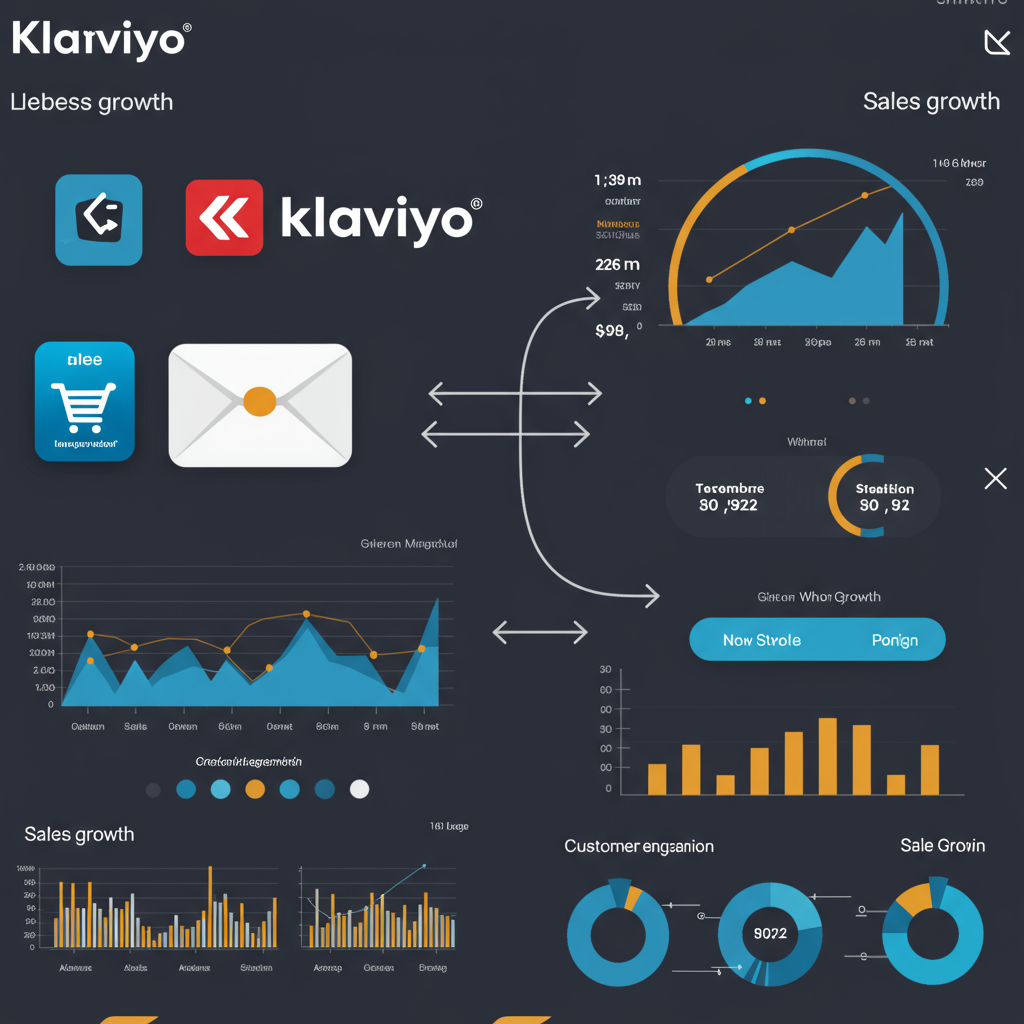Unlock unparalleled customer engagement and revenue growth by seamlessly connecting your Shopify store with Klaviyo’s powerful marketing automation.
As an e-commerce merchant, I’m constantly looking for ways to optimize my store’s performance and deepen customer relationships. One of the most impactful strategies I’ve implemented involves the powerful combination of Klaviyo and Shopify.
Today, I want to share my insights and walk you through how you can effectively use Klaviyo with your Shopify store to drive significant growth.
First, let’s clarify what each platform brings to the table. Shopify, as you likely know, is my go-to e-commerce platform for building and managing online stores. It’s robust, scalable, and user-friendly.
Klaviyo, on the other hand, is a leading marketing automation platform specifically designed for e-commerce businesses. It excels at email and SMS marketing, segmentation, and personalized customer journeys.
The magic truly happens when these two platforms are integrated. Shopify provides the transactional data – purchases, browsing behavior, customer profiles – and Klaviyo leverages this data to create highly targeted and automated marketing campaigns.
From my experience, the primary benefit of this integration is the ability to personalize communication at scale. Generic emails simply don’t cut it anymore; customers expect relevant messages.
Klaviyo pulls in all the rich customer data from Shopify, allowing me to segment my audience based on purchase history, website activity, demographics, and even predicted future behavior.
This level of segmentation means I can send the right message to the right person at the right time, significantly boosting engagement and conversion rates.
So, how do we get started with this powerful duo? The integration process itself is surprisingly straightforward, which I truly appreciate as a busy merchant.
My first step was to ensure I had an active Klaviyo account. If you don’t, you’ll need to sign up. Klaviyo offers various plans, including a free tier for smaller lists, which is great for getting started.
Once logged into Klaviyo, I navigated to the “Integrations” tab. Here, you’ll find a direct option to connect with Shopify.
Klaviyo will then guide you through the process, which typically involves authorizing the connection directly from your Shopify admin. It’s usually a one-click install from the Shopify App Store or a direct API key exchange.
I remember being impressed by how quickly the initial data sync began. Klaviyo immediately started pulling in my customer profiles, order history, and product catalog from Shopify.
This initial sync is crucial because it populates Klaviyo with the foundational data needed to build your segments and flows. It might take a little time depending on the size of your store.
With the integration complete and data flowing, the real fun begins: leveraging Klaviyo’s features. My absolute favorite feature is “Flows,” which are automated sequences of emails or SMS messages.
I’ve set up several essential flows that have become revenue-generating machines for my business. The “Abandoned Cart” flow is a non-negotiable; it recovers a significant percentage of lost sales.
Another highly effective flow I use is the “Welcome Series.” When a new customer signs up for my email list via a Shopify pop-up form (also managed by Klaviyo), they receive a series of onboarding emails.
These welcome emails introduce my brand, highlight popular products, and often include a first-purchase discount, building immediate rapport and encouraging that initial sale.
I also heavily rely on “Browse Abandonment” flows. If a customer views a product on my Shopify store but doesn’t add it to their cart, Klaviyo can trigger an email reminding them of their interest.
Post-purchase flows are equally vital. I use them to thank customers, provide order updates, ask for reviews, and recommend complementary products based on their recent purchase from Shopify.
Beyond automated flows, I use Klaviyo for my regular “Campaigns,” which are one-time email blasts for promotions, new product announcements, or seasonal sales.
The segmentation capabilities here are invaluable. I can send a campaign about new women’s apparel only to customers who have previously purchased women’s items, for example.
Klaviyo’s forms, which seamlessly integrate with Shopify, are my primary tool for list growth. I’ve implemented pop-ups and embedded forms to capture email addresses directly on my store.
These forms are highly customizable and can be targeted to specific pages or user behaviors, ensuring I’m collecting leads effectively.
Finally, I regularly dive into Klaviyo’s “Analytics and Reporting.” This allows me to see the direct impact of my email and SMS efforts on my Shopify sales.
I can track open rates, click-through rates, conversion rates, and the revenue generated by each flow and campaign, helping me continually optimize my strategy.
My advice to you is to start with the foundational flows: Welcome, Abandoned Cart, and Post-Purchase. These will give you the quickest return on your investment.
Then, gradually explore more advanced segmentation and A/B testing to refine your messages and maximize their impact.
Remember, the goal is to build lasting customer relationships, not just make a single sale. Klaviyo, powered by Shopify’s data, empowers me to do just that.
What do you think about this article? I’d love to hear your thoughts and experiences with Klaviyo and Shopify.






